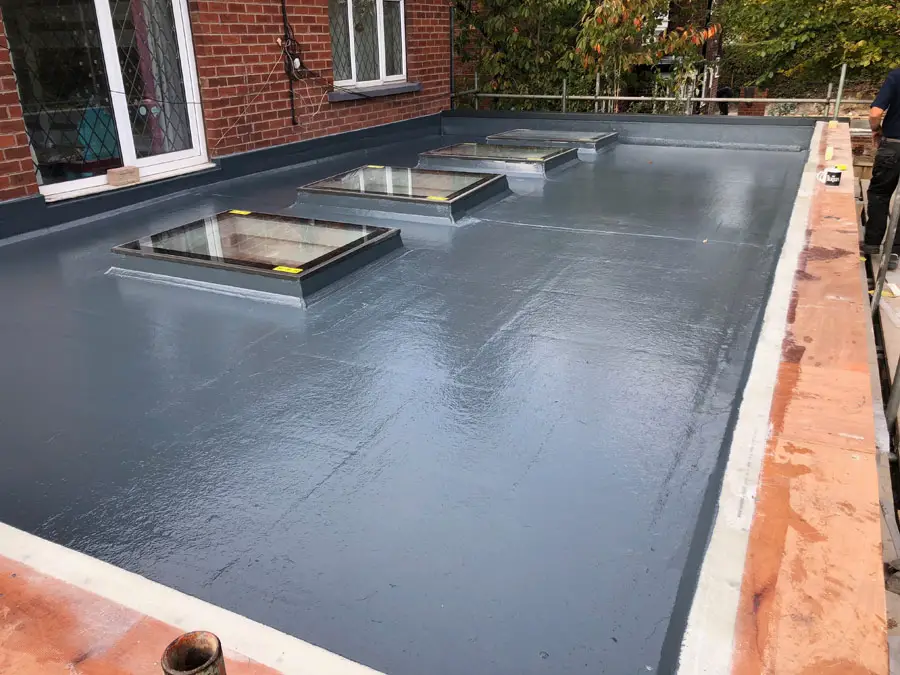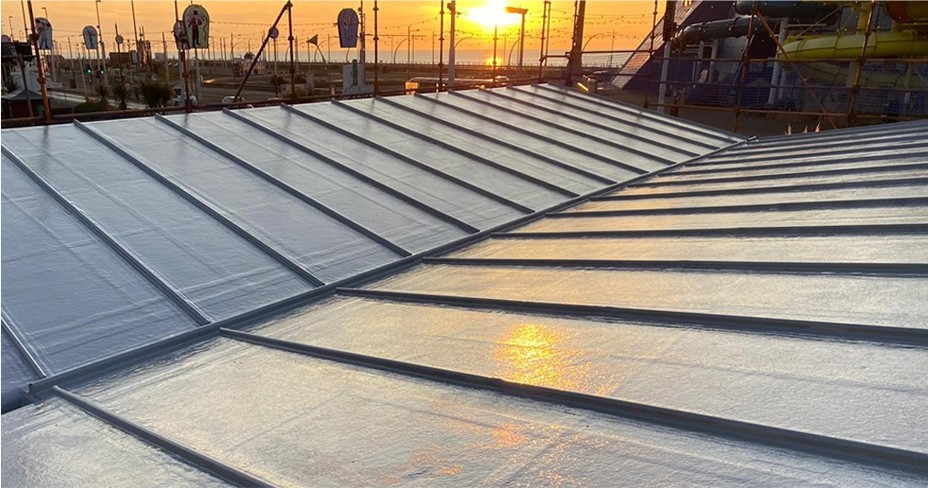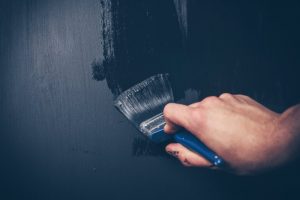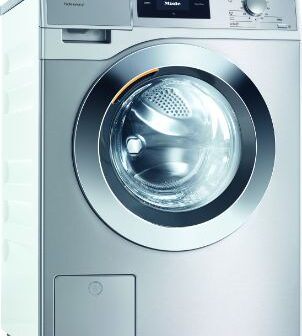
When it comes to roofing materials, homeowners and construction professionals have a wide array of options to choose from.
One popular choice in the United Kingdom is fibreglass roofing. Fibreglass, also known as glass-reinforced plastic (GRP) roofing, offers several advantages and disadvantages that are important to consider before making a decision.
Advantages of Fibreglass Roofing

1. Durability
Fibreglass roofing is renowned for its exceptional durability. The material is highly resistant to harsh weather conditions, including heavy rain, strong winds, and UV radiation.
Unlike traditional roofing materials such as tiles or felt, fibreglass is less prone to cracking, warping, or fading over time.
This durability ensures that your roof remains intact and protects your home for many years, making fibreglass an excellent long-term investment.
2. Lightweight
One of the significant advantages of fibreglass roofing is its lightweight nature. Fibreglass roofs are considerably lighter than traditional options like concrete or slate tiles.
This lightweight characteristic makes the installation process easier and less time-consuming.
Moreover, it reduces the overall load on the building’s structure, minimizing the risk of structural damage.
Additionally, the lightweight nature of fibreglass allows for easier transportation and handling during the installation process.
3. Versatility
Fibreglass roofing offers great versatility in terms of design and customization options. The material can be molded into various shapes and sizes, allowing for creative and unique roofing solutions.
Whether you have a traditional or modern home, fibreglass can be tailored to match your aesthetic preferences seamlessly.
Additionally, it can be installed on both flat and pitched roofs, making it a versatile choice for different types of properties in the UK.
4. Seamless Installation
Unlike other roofing materials that require overlapping or joining, fibreglass roofs are installed in a single continuous layer.
This eliminates the need for joints, seams, or weak points that are prone to leakage. The seamless installation not only enhances the aesthetic appeal of the roof but also improves its overall performance and longevity.
Additionally, fibreglass roofing can be complemented with accessories such as dry ridge systems for enhanced weatherproofing and durability.
5. Low Maintenance
Once installed, fibreglass roofs require minimal upkeep and can withstand the test of time with little intervention.
Unlike traditional roofing materials that may require regular inspections, repairs, or replacements, fibreglass roofs remain relatively maintenance-free.
This advantage translates into long-term cost savings and peace of mind for homeowners.
6. Energy Efficiency
In today’s environmentally conscious world, energy efficiency is a significant consideration for homeowners.
Fibreglass roofing offers excellent insulation properties, helping to regulate the temperature inside your home.
The material’s thermal efficiency reduces heat loss during the colder months and minimizes heat gain in the summer, leading to energy savings and reduced utility bills.
Disadvantages of Fibreglass Roofing
1. Initial Cost
While fibreglass roofing offers numerous advantages, it is essential to consider the initial cost implications.
Fibreglass roofing materials, along with professional installation, can be more expensive compared to other roofing options.
However, it’s important to remember that fibreglass roofs provide long-term durability and require minimal maintenance, which can offset the initial investment over time.
2. Professional Installation
Proper installation is crucial to ensure the performance and longevity of a fibreglass roof. Unlike some other roofing materials that can be DIY projects, fibreglass roofing requires professional expertise and specialized equipment for installation.
This means that you will need to hire an experienced contractor, adding to the overall cost of the project.
However, investing in professional installation will ensure that your fibreglass roof is installed correctly and provides optimal protection for your home.
3. Limited Repair Options
While fibreglass roofing is known for its durability, it is not entirely immune to damage. In the event of a significant impact or accident, repairing a fibreglass roof can be challenging.
Unlike other roofing materials that can be repaired or replaced in specific sections, fibreglass repairs often require the entire roof to be resurfaced.
This can be a time-consuming and costly process, which is important to consider when evaluating the overall maintenance requirements of a fibreglass roof.
4. Slippery Surface
Fibreglass roofing can have a smooth and slippery surface, particularly when wet. This characteristic can be a concern for homeowners who need to access their roofs for maintenance or cleaning purposes.
Proper safety precautions, such as using non-slip footwear and safety harnesses, should be taken to prevent accidents or falls.
5. Limited Color Options
Although fibreglass roofing offers versatility in terms of design and customization, the range of colour options may be somewhat limited compared to other roofing materials.
Fibreglass roofs commonly come in neutral or standard colours such as white, gray, or black.
While these colours can complement various architectural styles, they may not provide the same level of customization as other materials like tiles or shingles.
Is fibreglass roofing suitable for all types of buildings?
Yes, fibreglass roofing is suitable for all types of buildings in the UK. Whether you have a traditional Victorian home, a modern office building, or an industrial warehouse, fibreglass roofing can be tailored to suit your specific needs and requirements.
Its ability to be moulded into various shapes and sizes allows for seamless integration with different types of buildings, making fibreglass roofing a versatile and practical choice for any structure.
How long does a fibreglass roof typically last?
On average, a well-maintained fibreglass roof can last anywhere between 25 to 50 years.
However, it’s important to note that the lifespan of a fibreglass roof can vary depending on various factors, including the quality of installation, regular maintenance, exposure to extreme weather conditions, and overall usage.
Some fibreglass roofs have been known to last even longer with proper care.
Regular inspections, prompt repairs, and adherence to recommended maintenance practices can help ensure that your fibreglass roof reaches its maximum lifespan and continues to provide reliable protection for your property for several decades.



